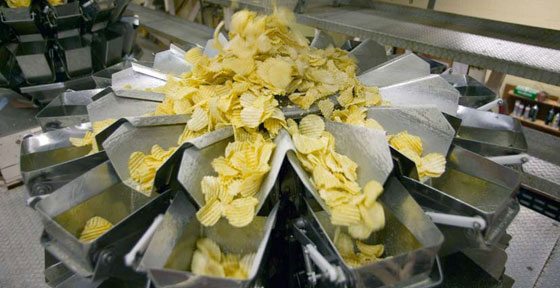The following is an excerpt from the article Processors Bring Energy In House, which features an interview with Deepak Vetal, product marketing manager, oil-free screw compressors. The article was published in the July issue of Food Processing magazine.
As The Simpsons’ Charles Montgomery Burns can attest, great power rests with those who generate power. Some of the utilities found in food and beverage plants qualify as localized power plants, with all the advantages and attendant challenges that Mr. Burns’ nuclear plant faces.
Operational efficiency was a nonissue until natural gas prices shot up around the turn of the past century. Although fracking has ushered in a new era of cheap gas, system optimization remains a priority. Years ago, if 50,000 lbs. of steam per hour were needed, plants would generate 70,000 lbs. and install enormous boilers. Those boilers now are relics, replaced by batteries of micro-boilers that can be fired as needed.
New efficiency options
Too much condensate in the piping system can result in water hammering, a potentially dangerous situation that increases maintenance costs. Hammering also can be an issue with compressed air, another plant utility that could be considered a local power system.
Compressed air systems and other plant utilities are essential for production but also major cost centers. Optimizing their performance results in significant savings for food and beverage manufacturers.
When Diageo Plc expanded its Plainfield, Ill., packaging hall six years ago, compressed-air buffer tanks were placed at strategic locations. One benefit was elimination of hammering when pressure surges occur, but the bigger payback was reduced system pressure. The plant was able to drop from 125 psi to 85 psi, slashing annual energy costs well into the six figures.
Buffer tanks still are used in industry, but “nowadays, people are moving to variable speed drive compressors,” reports Deepak Vetal, product marketing manager-oil-free screw compressors for Atlas Copco LLC, Rock Hill, S.C. While buffer tanks reduce banging during compressor cycling and lower energy consumption, there still is energy loss during machine unloading, points out Vetal. Higher energy prices and lower VFD costs are obsolescing that approach.
“Everyone knows compressed air is one of the top energy-consuming utilities in the plant, so any changes in how it is used are a good thing,” he adds. An example is the recirculation of waste heat from the compressors to drive desiccant towers that remove moisture from compressed air. Dryers traditionally drew their own power, but the inclusion of systems that capture latent heat from the compressors for that task now is a common feature on many compressors.
Keep Reading…
You can read the full article, which covers other power generation systems in food and beverage plants, here: Processors Bring Energy In House. If you would like to learn more about Atlas Copco compressors and energy recovery systems, contact us or leave a comment below.
You may also enjoy the following articles:
- Toxicology Lab Benefits from On-Site Nitrogen Generation, Part I
- How to Save $4.5 Million in Energy Costs over 10 Years
- Atlas Copco Awarded ISO 22000 – Food Safety System Certification
Source: Compressed Air Blog


